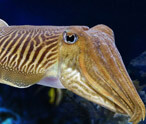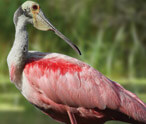A basking shark is the second largest creature of the ocean, the blue whale being the biggest one. They swim slowly, mostly near the surface of water. Their triangular fins can be seen above the water surface. If you want to observe these interesting organisms in their natural habitat, Scotland is where you need to be.
Although they are found in a number of places near the coastlines of the Pacific Ocean and the Atlantic Ocean, basking sharks migrate to warmer waters during the chilly winters. On the other hand, they seek cooler temperature during the summer. Therefore, the coastlines of Scotland welcome the world’s second largest fish each summer. Proper shark diving excursions are arranged from May to September that is the time during which the fish migrates to the waters of Scotland. Interested folks enjoy deep-sea diving to swim with these fascinating fish and observe their activities.
The word "shark" inspires fear and gives goose bumps. However, a basking shark is not a carnivore and is in no way a threat to humans. It is for this reason that wildlife lovers can enjoy a swim with these harmless creatures in Scotland. If you are looking for some basking shark facts, below is an interesting discussion about this popular fish.
Distinguishing Features of the Ocean's Second Largest Fish
In an ocean full of a diversity of wildlife, how can one distinguish this creature from many other large fish? You can familiarize yourself with its features through basking shark pictures. The fish possesses the following unique physical characteristics which make it stand out from all the other ocean creatures.
Large Size
One obvious distinguishing characteristic of the world’s second largest fish is its huge size. It can be between thirty to thirty-three feet long and up to six tons heavy. In the case of most of the other organisms, the dominant male is larger and heavier. On the other hand, in the case of this particular fish, the females take the lead by being larger in size.
A Distinguishable Snout
The bulbous snout of these fish is conical in shape. It is one of their most prominent features, helping them to be easily identified. At birth, the snout is hooked upwards or downwards. This hooked appearance helps the young ones feed while they are still inside the womb of their mother. As they grow after birth, this hooked look disappears and the snout becomes elongated.
A Large Mouth
They have a large mouth which suits their filter-feeding habits. They are able to open their mouth as wide as an entire meter. Inside the mouth, there are fifteen rows of teeth, six on the upper jaw and nine on the lower jaw. These teeth are hooked in shape and small in size. However, only some of these teeth rows are used when the fish feeds.
An Angular Dorsal Fin
One way through which their presence becomes obvious is the appearance of their large and angular dorsal fin on the surface of the water. This fin can be as long as two meters and has a triangular shape.
Extended Gill Slits
Another one of the most prominent physical features of these fish is that of their unusually long gill slits. Extending from the top towards the bottom, there are six of these structures on each side of their head. Found on these gills are numerous gill rakers. The latter is used in filtering tiny prey or other food particles from the water.
Its Natural Habitat
As mentioned above, these migratory fish move from cold to warm waters during the winters and in the opposite direction when it is the summer season. They mostly exist near the continental shelf. Being filter feeders, they are found in regions which have a high amount of plankton. This source of food is mostly found near the surface of the water. For this reason, these fish do not go deeper than 3,000 feet in the water. These giant fish have also been observed to stay close to the land. That's why they are mostly found swimming around near estuaries or bays.
Its Favorite Food
This filter-feeder enjoys feasting mostly on the zooplankton. Zooplankton consists of small crustaceans, small fish, fish eggs, and larvae. It also enjoys feeding on shrimp which is found a little deeper into the water. However, it is a little picky when it comes to the quantity of the food. The fish refuses to feed in a region where the concentration of plankton is less than 1 gram per cubic meter of water. It simply swims on searching for regions where there is more abundance of its food.
More Interesting Facts
Here is some more interesting information about this magnificent fish.
- In just one hour, this fish can filter as much as eighteen hundred tons of water!
- It has such a large liver that about twenty-five percent of its body weight is contributed by this organ.
- In a region abundant in plankton, a group of around 100 of these fish feeding together can be found.
- Although it is the second largest fish in the entire world, it has very tiny eyes. These small eyes help it sense the changes in the intensity of the light in order to figure out the depth of water it is swimming in.
- The fish has a large brain cavity, but a small brain inside it. Tissue strands attach the brain to the walls of the cavity.
- It has been hunted by humans for its valuable dorsal fin and liver. In 1947, the largest number of these organisms was killed, amounting to around 250. From then onwards, serious steps have been taken to put an end to their overhunting.
- Scientists believe that this fish can live to a hundred years of age.
- Its natural predators include the killer whale as well as the tiger whale.
- The UK Biodiversity Action Plan and the Scottish Biodiversity Strategy include the protection of this fish against human hunting.
Unfortunately, this amazing creature has already been declared as vulnerable to endangerment by IUCN. Timely efforts by environmentalists and wildlife organizations can protect this creature from the evil intentions of humans.
Biggest Shark In The World
Shark is the largest sea mammal in the world. There are a lots of shark species which are present in different oceans of the world. Among these shark species Whale Shark is the biggest shark in the world. Here is the list of names of largest sharks in... Read More ->
Latest Fish

Lionfish Facts
Lionfish is a chordate which belongs to the family...read more

Cuttlefish Facts
Cuttlefish is a mollusk which belongs to the class...read more

Octopus Facts
Do you know how, in the floor of an ocean, an octopus...read more

Sea Urchin Facts
Sea urchins are tiny water creatures found in oceans...read more
Latest Birds

Victoria Crowned Pigeon
With its name...read more

Information About Flamingos
Flamingos are...read more

Hoopoe Bird
Famous for its distinctive crown of...read more

Roseate Spoonbill
The beautiful Roseate Spoonbill...read more



























Largest Birds of Prey in the World by Size and Weight
Also called raptors, the birds...
List of Birds That Fly in V Formation
Did you ever feast your eyes on the amazing phenomenon...
Birds of Prey List
A bird of prey is also known as a raptor or a hunter. It belongs to the group of...
Millipedes Vs Centipedes
Centipedes and millipedes are both arthropods from the group...
Difference Between Warm Blooded and Cold Blooded Animals
Every living organism...
Top 10 Extremely Dangerous Insects
The insects have been grouped in class 'insecta' of...
Sheep Vs Goat
The goat and the sheep are related to each other through the same family. They...
Animals with Blue-colored Blood
Humans and other vertebrates have red-colored blood running...
Birds, Mammals And Reptiles
Before coming to the question of common ancestry of birds...